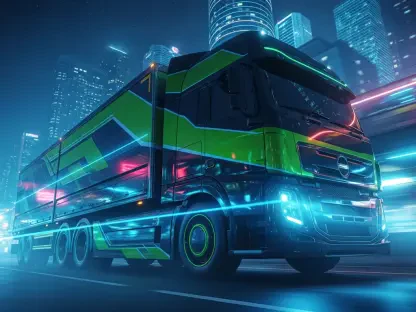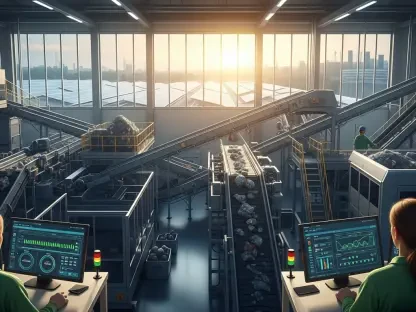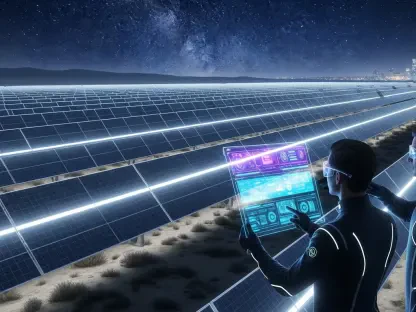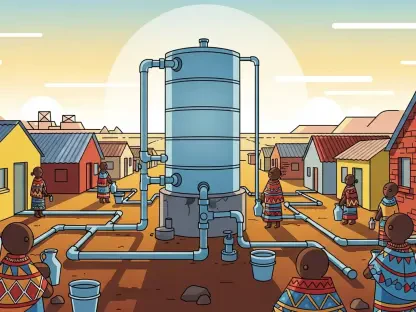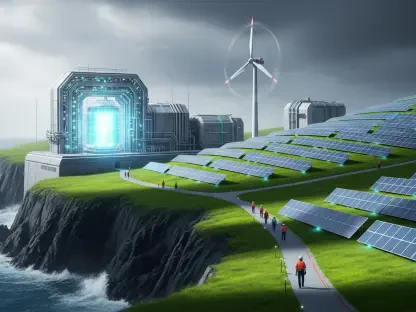In a landscape where the demand for clean energy solutions is surging, the unveiling of a pioneering Biogas-to-Oil (BTO) pilot facility in North Salt Lake, Utah, by OxEon Energy on November 14, 2025, stands as a beacon of innovation. This ambitious project takes something as mundane as food scraps and industrial waste and transforms it into sustainable synthetic fuels, offering a potential lifeline for industries like aviation and shipping. It’s a bold move to curb dependence on fossil fuels while simultaneously addressing the growing challenge of waste management. Picture a future where landfills shrink, and the very waste once discarded powers the engines of progress—this is the transformative vision that OxEon Energy is striving to realize. Beyond just fuel creation, this initiative hints at a broader shift toward a circular economy, where resources are reused in a continuous loop. The facility serves as more than a testing site; it’s a tangible step toward reimagining how energy and environmental stewardship can coexist. As global pressures mount to combat climate change, projects like this spark curiosity about whether such technologies can scale to meet humanity’s vast energy needs without sacrificing the planet’s health.
Harnessing Cutting-Edge Technology for Fuel Innovation
The cornerstone of OxEon Energy’s approach lies in an advanced technology known as solid oxide electrolysis cells (SOECs). These remarkable devices break down carbon dioxide and water into essential components such as oxygen, carbon monoxide, and hydrogen, which are then used in the Fischer-Tropsch process to synthesize liquid fuels. Initially proven in NASA’s MOXIE experiment on the Mars Perseverance Rover to generate oxygen from the planet’s sparse atmosphere, this technology has been brilliantly adapted for terrestrial applications. Witnessing its operation at the North Salt Lake facility, from small experimental cells to large industrial stacks, underscores its potential to revolutionize energy production. This adaptation exemplifies how innovations born from space exploration can address pressing Earth-bound challenges, paving the way for sustainable fuel alternatives that could power diverse industries.
Equally compelling is the integration of this technology with local waste resources. Along Utah’s Wasatch Front, food and industrial waste undergoes anaerobic digestion, a process that converts it into methane-rich biogas over several weeks. This biogas then serves as a critical feedstock for OxEon’s fuel synthesis, effectively linking waste disposal with energy creation. Such a system not only reduces landfill burdens but also creates a renewable energy source that can be replicated in other regions. The seamless fusion of scientific ingenuity with practical application positions this model as a potential catalyst for global adoption, inspiring communities to rethink waste as a valuable resource rather than a problem to be buried.
Building Scale for a Sustainable Energy Future
Scaling up from a pilot project to widespread implementation presents significant hurdles, yet OxEon Energy is meeting these challenges with substantial support. A $36 million grant from the U.S. Department of Energy, awarded in 2024 under the Bipartisan Infrastructure Law, is fueling efforts to increase SOEC production to an annual capacity of 25 megawatts, with aspirations for a gigawatt-scale facility in the coming years. This transition involves moving from labor-intensive manual assembly to automated production lines, coupled with rigorous quality control measures to ensure reliability. These steps are crucial for driving down costs and enhancing output, positioning synthetic fuels as a competitive alternative to conventional energy sources. The focus on scalability reflects a broader ambition to make clean energy accessible and economically viable on a massive scale.
Collaboration plays an equally vital role in this expansion. Strategic alliances with entities like JR Automation and academic partners such as the University of Utah are accelerating advancements in manufacturing processes. These partnerships extend beyond mere technical support; they aim to establish a thriving cleantech sector in Utah, fostering job creation and economic development. By building a robust industrial ecosystem, OxEon is demonstrating that sustainable energy initiatives can yield tangible benefits for local economies. This collaborative model could serve as a blueprint for other states or countries looking to invest in renewable technologies, showing that environmental goals and economic growth are not mutually exclusive but can reinforce each other.
Fostering Community Ties and Local Impact
OxEon Energy’s mission transcends technological innovation by embedding itself within the fabric of the local community. Through partnerships with organizations like the South Davis Sewer District and Wasatch Resource Recovery, the company converts regional waste into renewable natural gas and nutrient-rich fertilizers that directly support nearby agricultural endeavors. These initiatives create a closed-loop system where waste is repurposed to benefit the very communities that produce it. Programs that encourage residents to participate in food waste recycling further amplify this impact, illustrating how sustainability can be a collective effort that engages people at every level. This approach transforms the concept of energy production into a shared responsibility with immediate, local rewards.
Another dimension of this community focus is workforce development. By offering internships, apprenticeships, and collaborating with universities, OxEon is cultivating the next generation of energy innovators within Utah. This commitment to education ensures that the skills needed for advancing clean energy technologies are nurtured locally, creating high-quality job opportunities that contribute to long-term economic stability. Such efforts highlight a model of inclusive progress, where the benefits of technological advancements are not confined to corporate entities but are distributed across the community. This strategy could inspire other regions to adopt similar programs, ensuring that the transition to sustainable energy also builds stronger, more resilient local economies.
Expanding Horizons: Defense and Aerospace Applications
The versatility of OxEon’s biogas-to-oil technology extends far beyond civilian energy needs, reaching into the realms of defense and aerospace with striking implications. One notable project involves developing modular systems for the U.S. Navy to convert carbon dioxide extracted from seawater into jet fuel, a breakthrough that could enhance military supply chain resilience by reducing dependence on traditional fuel logistics. This application showcases how sustainable technologies can address strategic national security concerns while maintaining an environmental focus. The ability to produce fuel in remote or operational settings could redefine how military operations are sustained, marking a significant leap in operational efficiency.
Additionally, the roots of this technology in space exploration hint at further potential in the burgeoning space economy. The successful adaptation of SOEC systems from Martian oxygen production to Earth-based fuel synthesis suggests possibilities for supporting long-term space missions or extraterrestrial resource utilization. This dual-purpose nature of the technology—serving both terrestrial sustainability and strategic applications—underscores its transformative potential across multiple sectors. As global challenges like climate change and resource scarcity intensify, innovations that bridge civilian, military, and exploratory needs could play a pivotal role in crafting comprehensive solutions. This broad applicability positions biogas-to-oil as a cornerstone for future advancements in energy and beyond.
Reflecting on a Milestone in Clean Energy Progress
Looking back, the launch of OxEon Energy’s Biogas-to-Oil pilot facility in North Salt Lake on November 14, 2025, emerged as a defining moment in the quest for sustainable fuel alternatives. It showcased how waste could be reimagined as a resource, producing synthetic fuels and renewable natural gas that addressed both environmental and energy demands. The integration of space-derived solid oxide electrolysis cell technology into practical applications marked a historic crossover of innovation, while substantial government funding and partnerships laid the groundwork for scaling these solutions. Community engagement and workforce initiatives further ensured that the benefits reached local stakeholders, setting a standard for inclusive sustainability. Moving forward, the next steps involve accelerating commercial deployment and exploring how this model can be adapted globally. Continued investment in manufacturing capacity and cross-sector applications, particularly in defense and aerospace, will be critical. This milestone offers a roadmap for policymakers and industry leaders to prioritize circular economy principles, ensuring that the fight against climate change also fuels economic and strategic advancements.





